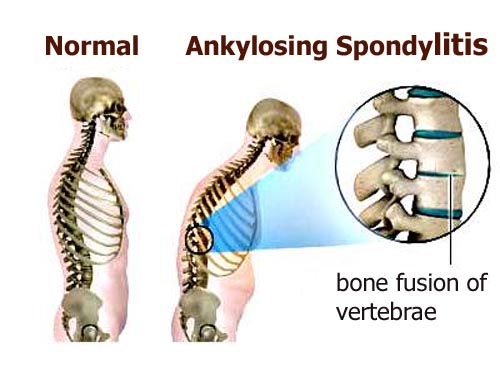Ankylosing Spondylitis, Rheumatoid spondylitis
Ankylosing spondylitis (AS) is a form of arthritis that affects the spine and is a chronic condition. The term is derived from two Greek words that mean "bent spine inflammation." There are no specific lab tests to identify ankylosing spondylitis. Certain blood tests can check for signs of inflammation, but inflammation can be caused by many different health problems. Your blood can be tested for the HLA-B27 gene, but most people who have that gene don't have ankylosing spondylitis. It causes painful inflammation of the joints between the vertebrae in the spine and between the spine and pelvis. Occasionally it can involve other joints or organs in the body as well. Early symptoms include pain and stiffness in the lower back and hips that may start in late adolescence or early adulthood. This pain and stiffness may fluctuate over time and spread to other parts of the body. In about 40% of patients, the eyes are affected with an inflammation called uveitis that can cause eye pain, sensitivity to light, and blurred vision. Another complication can be heart valve inflammation, such as aortitis. Doctors believe that AS is an autoimmune disease. A trigger such as an infection may cause the body to react abnormally, leading to inflammation. Over time, inflammation of the ligaments around the bone can lead to new bone growth, which can cause separate vertebrae to fuse together (termed ankylosis). This can lead to long-term lack of mobility as well as stiffening of the rib cage, causing restricted chest expansion, reduced lung capacity, and difficulty breathing. AS affects men more than women and is usually diagnosed during the teenage years, twenties, or thirties. People with a gene called HLA-B27 are at increased risk of developing the condition. However, being born with this gene doesn't necessarily lead to AS and scientists are currently researching other suspected triggers.
